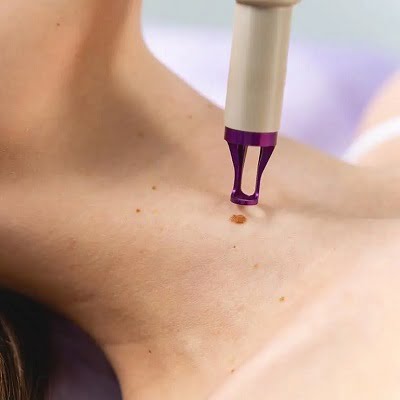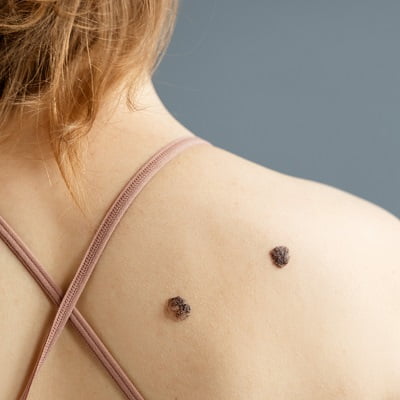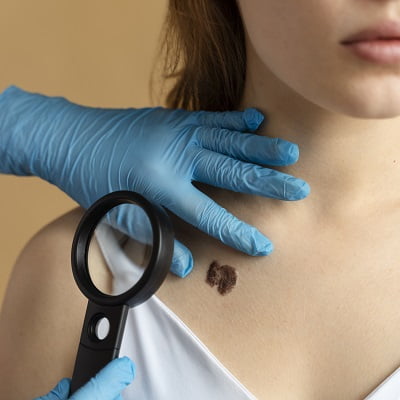
One often-used dermatological treatment that can improve your looks and lower your risk of skin cancer is mole removal. Still, good aftercare is essential to guarantee the best healing and reduce the chance of problems. However, How to Care for Skin After Mole Removal? So, with simple advice and guidelines for a seamless recovery, you can get a fast recovery.
How to Care for Skin After Mole Removal?
Mole removal can help one get tag-free skin. Moreover, it can help achieve cosmetic and medical requirements. However, How to Care for Skin After Mole Removal? The following points can help you.
Quick Aftercare
Your skin will be vulnerable straight after mole removal. Correct actions taken during the first healing period are crucial for preventing infection and encouraging good skin regeneration.
Maintain the Area Tidy
The first and most important component of post-procedural treatment is maintaining the wound’s cleanliness. Twice a day, softly clean the area with water and mild soap. Avoid scrubbing the region or using strong cleaners, as these could aggravate the skin and slow down healing.
Use an Antibacterial Ointment
Apply an antimicrobial ointment as advised by your dermatologist after cleaning the area. This keeps the wound wet and helps to avoid infection, encouraging faster healing.
Cover with a Bandage
Cover the wound with a sterile bandage or dressing, particularly in the first several days. This stops the wound from drying down too rapidly and helps to keep dirt and bacteria out.
Control of Pain and Discomfort
After a mole is removed, some discomfort and agony are common. These pointers should help control these symptoms:
Use Over-the-Counter Pain Relievers
Acetaminophen or ibuprofen, among over-the-counter painkillers, can help control inflammation and pain. Use the dosing guidelines found on the drug box or your doctor’s advice.
Avoid Irritants
Avoid exposing the cut to irritants, such as chlorine, fragrances, and too strong heat. These can aggravate already-existing problems and delay the healing process.
Promoting Healing
Promoting healing and reducing scarring following mole removal depends mostly on suitable treatment and patience.
Limit Sun Exposure
Shield the recovering cut from direct sunshine. Ultraviolet (UV) radiation raises scarring risk and can cause hyperpigmentation. If you must be outside, wear protective gear and use a broad-spectrum sunscreen with at least SPF 30.
Don’t Pick at Scabs
As the cut heals, a scab will develop. Not picking at the scab is vital since it increases the risk of infection and scarring. Let the scab drop spontaneously.
Keep the Area Moisturized
The wound must be kept moist to reduce the danger of scarring and avoid dryness. After the first healing period, you might switch from an antibiotic ointment to a mild moisturiser or petroleum jelly.
Monitoring for Signs of Infection
Although infections are rare, you should keep an eye on the cut for any indications of problems. See your dermatologist should you experience any of the following:
- More redness or edema surrounding the cut
- Pus or abnormal discharge
- Constant discomfort or sensitivity
- Chill or fever
Long-Term Maintenance
After the cut has healed, ongoing treatment can assist to reduce any long-term consequences and guarantee complete recovery of your skin.
- Massage the Domain: Over time, gently rubbing the scar tissue with silicone gel or cream will assist it to soften and look better. See your doctor for advised goods.
- Applying Scar Treatments: Scar management calls for several over-the-counter and prescription therapies. To help scars look less noticeable, silicone sheets, gels, and creams can be quite successful.
Final Thought
Maintaining your skin following mole removal needs both diligence and patience. Following these simple rules and guidelines will help you to guarantee a good recovery and reduce your chance of complications. Good aftercare not only accelerates healing but also helps to produce the greatest potential aesthetic outcomes. Always follow the directions of your dermatologist and see them should you have questions during the healing procedure. Following correct care will help you to enjoy better, clearer skin following mole removal.
Book your appointment with Royal Cosmetic Surgery-PK to consult with expert surgeon for mole removal and all other skin problems.






